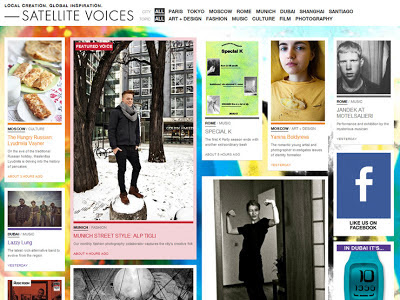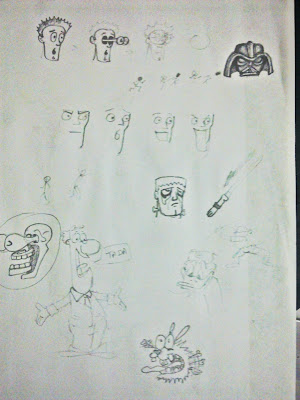Paul Rand
Paul Rand was an American graphic designer, best known for his corporate logo designs, including the logos for IBM, UPS, Enron, Westinghouse, ABC and Steve Jobs's NeXT. HE was one of the originator of Swiss Style of graphic design
Michael Surrey
Oftentimes it is at least somewhat predictable what animators will eventually become supervisors. A typical “rookie” supervising animator at Disney has usually either been a top animator at other studios for quite sometime(Eric Goldberg, Duncan Marjoribanks, Bruce Smith, Dale Baer), has worked at the studio for many years as a right hand to the top animators(Tony de Rosa, Broose Johnson), or has displayed blow-you-away skills from the minute they entered the medium(James Baxter). Sometimes, however, a young unknown animator who’s an unlikely choice to be a supervisor is assigned a character that is perfect for them and the person steps into the class of superstardom. That’s probably the best way you can describe what happened when Mike Surrey was selected to supervise Timon in the Lion King.
Milton Glaser
Milton Glaser (born June 26, 1929) is a graphic designer, best known for the I Love New York logo, his "Bob Dylan" poster, and the "DC bullet" logo used by DC Comics from 1977 to 2005. He also founded New York Magazine with Clay Felker in 1968.
My idea using
Milton Glaser Designs
Milton Glaser's Design like I love NY , he uselessly used the the word or an image to convey his message. I used the same Idea behind that, But if u see my image what you will read is ''bulb stop smoking floppy disk " Which actually does not make any scene .
So here is what the following image represent:
Bulb : well in cartoon or movies we uselessly see when ever a person gets an idea there is a bulb image on top of his head to show that he got an idea or something.
No Smoking Sign: Its obvious Not to smoke.
Floppy Disk : Floppy disk where used to save files and even in computer when when we are about to save a file we can a small image of floppy to represent it and we can see i have put the earth below it just to show what are we trying to save.
So if we put them together we get " think if we actually stop smoking we can save earths environment or atmosphere"...
El Lissotzky
Lazar Markovich Lissitzky was a Russian artist, designer, photographer, typographer, and architect. He was an important figure of the Russian avant garde, helping develop suprematism with his mentor, Kazimir Malevich, and designed numerous exhibition displays and propaganda works for the former Soviet Union. His work greatly influenced the Bauhaus, and Constructivist movements and he experimented with production techniques and stylistic devices that would go on to dominate 20th century graphic design.
My idea using
El Lossotzky
Designs
I was looking more into his work and then i found his one design where he played with word. I used almost de same concept and designed but changed the words to give it a different meaning. Where the word ''P'' is represented as the protector or the protester leading the "EARTH".
This Poster i designed for Global warming. Well know the antarctic is filled with ice and it hugely effected because of global warming as ice melt that increases the water level up, But what About the animals living there, It there home that we are destroying.
So this is just a simple design i came up with that a bear siting on top of Antarctica and trying to protect it
 |
| Paul Rand |
 |
| Paul Rand designed logos |
MY WORK
Zara is a Spanish clothing and accessories retailer based in Arteixo, Galicia, and founded in 1975 by Amancio Ortega andRosalía Mera.
 |
| Michael Surrey |
My drawing using Michael Surrey characters
Michael surrey is an animator and character designer. So i thought of designing few character myself and try to make the massage i'm try to send to the the viewer clearer.
For this Sketch i simply made a Evil man who's only intentions is to make money money and money , doesn't matter how he does it but he want money no mater what and how far he is willing to go
Milton Glaser
 |
| Milton Glaser |
Milton Glaser's Design like I love NY , he uselessly used the the word or an image to convey his message. I used the same Idea behind that, But if u see my image what you will read is ''bulb stop smoking floppy disk " Which actually does not make any scene .
So here is what the following image represent:
Bulb : well in cartoon or movies we uselessly see when ever a person gets an idea there is a bulb image on top of his head to show that he got an idea or something.
No Smoking Sign: Its obvious Not to smoke.
Floppy Disk : Floppy disk where used to save files and even in computer when when we are about to save a file we can a small image of floppy to represent it and we can see i have put the earth below it just to show what are we trying to save.
So if we put them together we get " think if we actually stop smoking we can save earths environment or atmosphere"...
This Poster is completely based on his way of doing poster i have just brought in a little change to portray that we ourself are destroy the earth and eating it form every where and destroying it . We human are the reason of our own destruction
 |
| El Lissitzky |
I was looking more into his work and then i found his one design where he played with word. I used almost de same concept and designed but changed the words to give it a different meaning. Where the word ''P'' is represented as the protector or the protester leading the "EARTH".
This Poster i designed for Global warming. Well know the antarctic is filled with ice and it hugely effected because of global warming as ice melt that increases the water level up, But what About the animals living there, It there home that we are destroying.
So this is just a simple design i came up with that a bear siting on top of Antarctica and trying to protect it






















































